
A Marine expeditionary unit is the smallest air-ground task force (MAGTF) in the United States Fleet Marine Force. Each MEU is an expeditionary rapid reaction force ready to answer any crisis, whether it be disaster aid or a combat mission. Marine amphibious unit (MAU) was the name used until the late 1980s.

Force Reconnaissance (FORECON) are United States Marine Corps deep reconnaissance companies that supply military intelligence to the command element of the Marine Air-Ground Task Force (MAGTF). Force Reconnaissance companies unlike USMC division reconnaissance report to the Marine expeditionary force (MEF) and provide direct action and deep reconnaissance during large-scale operations.
The School of Infantry (SOI) is the second stage of initial military training for enlisted United States Marines after recruit training. The ITB now called IMC went from a 59 day course to 14 week course. Since the initial training pipeline is divided between coasts, Marines from areas east of the Mississippi River usually graduate from MCRD Parris Island and move on to SOI at SOI East, while those from the western half of the nation attend MCRD San Diego and move on to SOI West at the Camp San Onofre area of Camp Pendleton in California. Female Marines are trained at both SOI East and SOI West. The School of Infantry's training mission ensures "Every Marine is, first and foremost, a Rifleman". At SOI, Marines with the Military Occupational Specialty of infantry are trained at the Infantry Training Battalion (ITB), while all non-infantry Marines are trained in basic infantry and combat skills at the Marine Combat Training Battalion. SOI marks a transition in the professional training of entry-level students from basically trained Marines to combat-ready Marines.
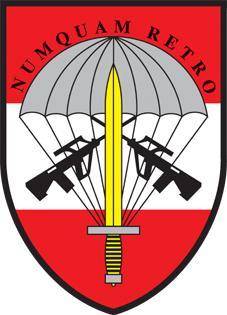
The Jagdkommando is the Austrian Armed Forces' special forces unit. The unit is based at Wiener Neustadt and is known to have a manpower of 400 operators.

United States Army Reconnaissance and Surveillance Leaders Course (RSLC) is a 29-day school designed on mastering reconnaissance fundamentals of officers and non-commissioned officers eligible for assignments to those units whose primary mission is to conduct reconnaissance and surveillance, target acquisition, and combat assessment operations. RSLC is taught by the 4th Ranger Training Battalion, Airborne and Ranger Training Brigade. The school is open to Soldiers, Marines, Sailors and Airmen to train them to expert levels in reconnaissance, surveillance, target acquisition, battle damage assessment, communications, planning, foreign vehicle identification, and other skills. The school was originally created to serve leaders from Long Range Surveillance Units (LRSU's), but now provides the specific reconnaissance training needed to ensure the effectiveness of small unit reconnaissance elements for the U.S. Army and joint force. Given the training focus and difficulty of the RSLC, the school is still commonly attended by operators from U.S. Army Special Forces, the 75th Ranger Regiment's Regimental Reconnaissance Company, U.S. Army Civil Affairs, Navy SEALs, and Marine reconnaissance units; today's students also come from more conventional infantry, Stryker and armored Brigade Combat Teams (BCT). Following the US Army decision to disband US Army LRS companies, the reconnaissance fundamentals taught in the course also provides U.S. military commanders the ability to preserve key LRS skills and abilities within the conventional force.
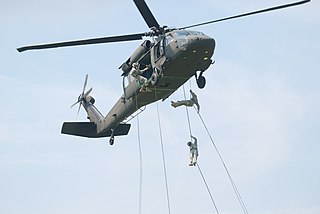
The United States Army Air Assault School, is an Army Forces Command Table of Distribution and Allowances unit located at Fort Campbell, Kentucky. Its primary task is training leaders and soldiers assigned to the 101st Airborne Division (AASLT), other United States Army units, and United States Armed Forces service members. The school is named for Command Sergeant Major Walter James Sabalauski.
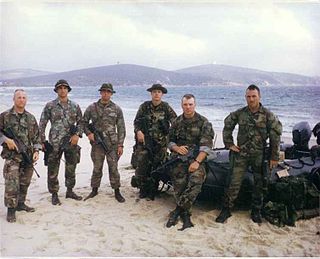
The Radio Reconnaissance Platoon is a specially trained Marine Corps Intelligence element of a United States Marine Corps Radio Battalion. A Radio Reconnaissance Team (RRT) was assigned as the tactical signals intelligence collection element for the Marine Corps Special Operations Command, Detachment One. Regular RRTs also participate in SOC operations during Marine Expeditionary Unit, or MEU(SOC), deployments.

The Special Actions Detachment or DAE is the tier one special force maritime unit of the Portuguese Navy. It is part of the Portuguese Marine Corps. Raised in 1985, the DAE is one of the smallest special forces units within the Portuguese Armed Forces. It is responsible for conducting air-sea rescue, amphibious reconnaissance, amphibious warfare, black operation, bomb disposal, CBRN defense, coastal raiding, counterterrorism, direct action, executive protection, hostage rescue, irregular warfare, ISTAR, long-range penetration, JTAC, manhunt high-value target, maritime sabotage, mountain rescue, naval boarding, operation behind high risk enemy lines, special operations, special reconnaissance, tracking targets, underwater demolition, unconventional warfare, other missions in support of Portuguese and NATO armed forces. DAE's mission and training are similar to American special forces and it often trains with them.

Visit, board, search, and seizure (VBSS) is the term used by United States military and law enforcement agencies for maritime boarding actions and tactics. VBSS teams are designed to capture enemy vessels, combat terrorism, piracy, and smuggling, and to conduct customs, safety and other inspections.
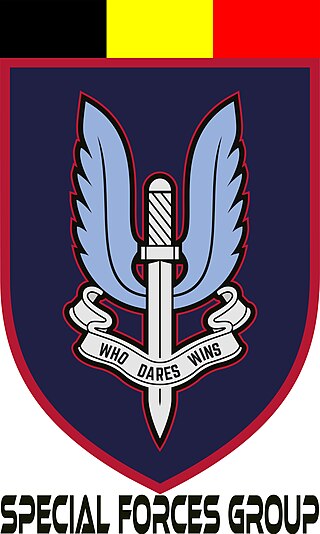
The Special Forces Group is the special forces unit in the Land Component of the Belgian Armed Forces.

The Marine Corps Security Force Regiment is a dedicated security and anti-terrorism unit of the United States Marine Corps. It provides security forces to guard high-value naval installations, most notably those containing nuclear vessels and weapons. It also provides Fleet Anti-terrorism Security Teams (FAST) and Recapture Tactics Teams (RTT). Marines who complete Security Forces training are assigned a secondary Military Occupational Specialty (MOS) of 8152, while instructors can earn 8153.

A Maritime Special Purpose Force (MSPF) is a United States Marine Corps specialized sub-unit of a Marine expeditionary unit. A MSPF is deployed to give the commanders low profile, two-platoon surgical emplacement in the accessible littoral regions. The MSPF provides the enhanced operational capability and precision skills to complement, enable, and execute selected conventional, maritime special operations. They can also perform operations not resident in traditional amphibious raid companies.

Marine expeditionary unit (special operations capable) (MEU(SOC)) is a program created by the United States Marine Corps (USMC) and the United States Navy (USN) in 1985 for Marine expeditionary units (MEU). The program enhances MEUs providing them with additional training and equipment to become certified as special operations capable with a Maritime Special Purpose Force (MSPF). The designation special operations capable is unique to the Marine Corps and means in relation to special operations. The role of a MEU(SOC) however is not equivalent to the special operations role of special operations forces. Although considered special operations capable a MEU(SOC) does not form part of the United States Special Operations Command (USSOCOM) established in 1987 or the United States Marine Forces Special Operations Command (MARSOC) later established in 2006.
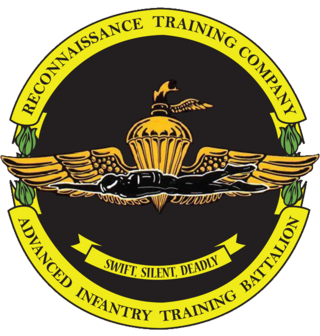
The United States Marine Corps Reconnaissance Training Company trains Marines in the amphibious environment as a Reconnaissance Marine, MOS 0321. It is under the Advanced Infantry Training Battalion (AITB) of the School of Infantry (West), Marine Corps Base Camp Pendleton, California.
Recondo is an American military acronym for a highly specialized infantry training or a graduate of a Recondo School who leads a small, heavily armed long-range reconnaissance team that patrols deep in enemy-held territory. It is also the colloquial name for a Marine that has graduated the grueling Basic Reconnaissance Course and earned the title of Recon Marine.

1st Force Reconnaissance Company conducted deep reconnaissance and direct action raids in support of I Marine Expeditionary Force requirements across the range of military operations to include crisis response, expeditionary operations and major combat operations. 1st Force Recon Company was deactivated on 26 October 2006 and the majority of the personnel were used to establish the 1st Marine Special Operations Battalion.

Helicopter Rope Suspension Technique (HRST) is a military term for techniques and methods of rappelling, fast roping, Special Patrol Insertion/Extraction (SPIE) and Jacob's Ladder operations. Helicopter Rope Suspension was developed as a means to insert and/or extract, by helicopter, ground forces into or from rough terrain, urban areas or water. HRST is designed to be used in situations wherein aircraft landings are impractical due to terrain or tactical situation.

The average member of the United States Navy's Sea, Air, Land Teams (SEALs) spends over a year in a series of formal training environments before being awarded the Special Warfare Operator Naval Rating and the Navy Enlisted Classification (NEC) O26A Combatant Swimmer (SEAL) or, in the case of commissioned naval officers, the designation 113X Special Warfare Officer. All Navy SEALs must attend and graduate from their rating's 24-week "A" School known as Basic Underwater Demolition/SEAL (BUD/S) school, a basic parachutist course and then the 26-week SEAL Qualification Training program.

The two amphibious/ground reconnaissance assets of the United States Marine Corps, Division and Force Reconnaissance, are generally trained in the same aspect and environment of intelligence collection for a Marine Air Ground Task Force (MAGTF) Commander, regardless of their difference in tactical area of responsibility (TAOR). However, in light of their distinctive responsibilities in their assigned areas of operations—whereas Division Recon conducts close and distant operations, Force Recon conducts deep operations—these two separate reconnaissance assets manage their own training protocols to fit their mission-oriented objectives.
Ground Intelligence Officer is a primary military occupation code of a U.S. Marine Corps intelligence officer. Ground intelligence officers serve as staff officers and commanders in the operating forces and are responsible for analyzing intelligence and planning, deployment and tactical employment of ground surveillance and reconnaissance units. The Ground Intelligence Officer can be a Recon Marine after their training is done.















